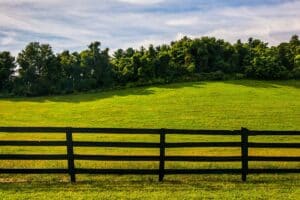Vacant land can have many different types of access, each with its own set of advantages and disadvantages. Understanding these different types of access is crucial for anyone looking to buy land for sale.
What is Property Access?
Property access refers to the right to enter, use, or occupy a piece of land. This can include the right to drive or walk on a road, or to access a building or other structure on the land. Property access can be granted or restricted by the owner of the land, and may be regulated by local laws or regulations.
Types of Access for Vacant Land
Public Road
One of the most common types of access for vacant land is through a public road. Public roads are maintained by the government and are typically open to the public. The main advantage of accessing vacant land through a public road is they’re generally well-maintained and provide a reliable means of transportation for all kinds of vehicles.
Private Road
Another common type of access for vacant land is through a private road. Private roads are owned and maintained by private individuals or organizations (like an HOA), and access may be restricted to certain individuals or groups. The main advantage of accessing vacant land through a private road is that it can offer more privacy and security. Private roads may not be as well-maintained as public roads, which can lead to issues with transportation and maintenance.
Easement
A third type of access for vacant land is through an easement. This one scares a lot of people off.
An easement is a legal agreement that grants the owner of the land the right to use a specific portion of another person’s property for a specific purpose. Easements can be used to provide access to vacant land that would otherwise be inaccessible. The main advantage of accessing vacant land through an easement is that it can provide a cost-effective solution for accessing land that would otherwise be difficult or impossible to access.
Right-Of-Way
Another type of access for vacant land is through a right-of-way easement. A right-of-way easement is a specific type of easement, usually an easement appurtenant, meaning that it runs with the land. All rights-of-way are easements, but the opposite is not true. A right-of-way easement is a legal agreement that grants the owner of the land the right to use a specific portion of another person’s property for transportation purposes. Rights-of-way can be used to provide access to vacant land that would otherwise be inaccessible.
Water or Air Access
Finally, it’s worth mentioning that there are also types of access that are not roads, such as boat, water, or air access. Boat access may be necessary for land near bodies of water such as lakes, rivers or oceans. Air access may be important for land located in remote or hard-to-reach areas. These types of access can be more expensive and complex to set up, but they can also open up unique opportunities for development and use of the land.
What’s it Called if There’s No Access to a Property?
If there is no access to a piece of land, it’s said to be landlocked. Landlocked property does not have a legal easement or right-of-way to a public road or other means of access, which means that it can only be reached by crossing over other private property (trespassing!). This can make it difficult or impossible to use or develop the land, and can lower its value. If you are thinking about buying land that requires an easement, it’s best to discuss the odds of obtaining one with a local real estate lawyer. Obtaining legal access to landlocked property requires several steps. If it’s their legal recommendation to stop pursuing a property or that you may lose in court, then it would be wise to heed their advice. In general, access falls into three legal categories: public access, deeded access, and undeeded access.
Public access means that property touches a government maintained road that the public has a right to use. If there is public access, you don’t have to cross anyone else’s property to get to your own.
Deeded access refers to a legally established right-of-way or easement that is specifically described and recorded in the deeds or property records for a particular piece of land. This type of access is typically granted by the owner of the land and is considered a permanent and binding right.
Undeeded access, on the other hand, refers to a right-of-way or easement that has not been specifically described or recorded in the property records. This type of access may be based on long-standing use, custom, or implied agreement, but it’s not necessarily a legal right. Undeeded access may be more difficult to prove or enforce in a court of law.
Understanding the different types of access for vacant land is crucial for anyone looking to purchase or develop land. Public roads are typically the easiest and most reliable means of accessing vacant land, but private roads, easements, rights-of-way and alternative forms of access such as boat or air access can also be viable options depending on the specific circumstances of the land.
Careful consideration of the advantages and disadvantages of each type of access can help ensure a successful land purchase. See Part 2 of this article for more information on accessing landlocked property.
Written by Felicia Cristofaro, co-founder and co-owner of Compass Land USA. For over 6 years, Compass Land USA has specialized in providing land buyers a safe and easy way to invest in rural and vacant land (especially in AZ, CO, FL, NM, AND NC!) and has helped over 250+ happy land buyers!
This content may not be used or reproduced in any manner whatsoever, in part or in whole, without written permission of LANDTHINK. Use of this content without permission is a violation of federal copyright law. The articles, posts, comments, opinions and information provided by LANDTHINK are for informational and research purposes only and DOES NOT substitute or coincide with the advice of an attorney, accountant, real estate broker or any other licensed real estate professional. LANDTHINK strongly advises visitors and readers to seek their own professional guidance and advice related to buying, investing in or selling real estate.










Add Comment